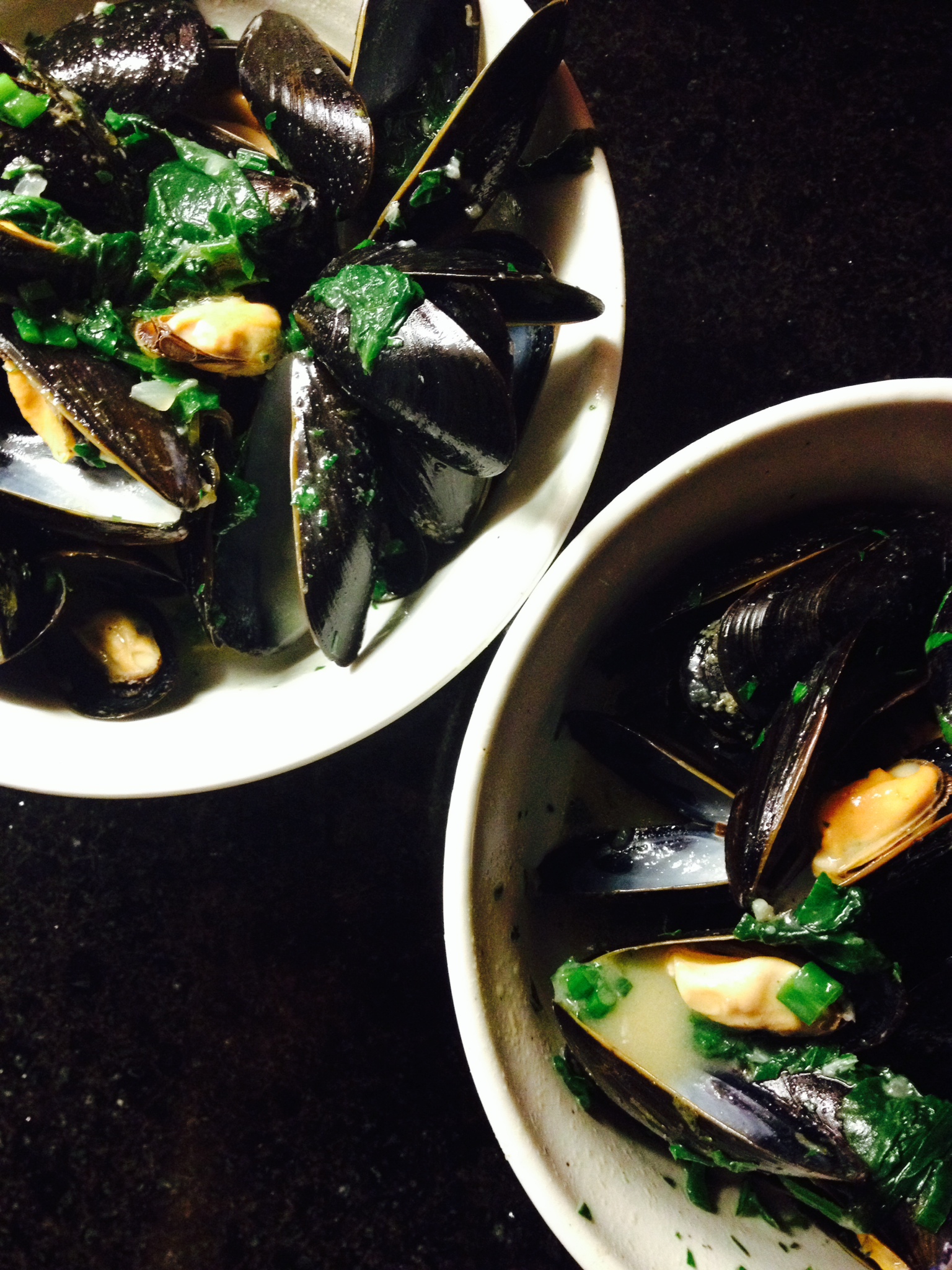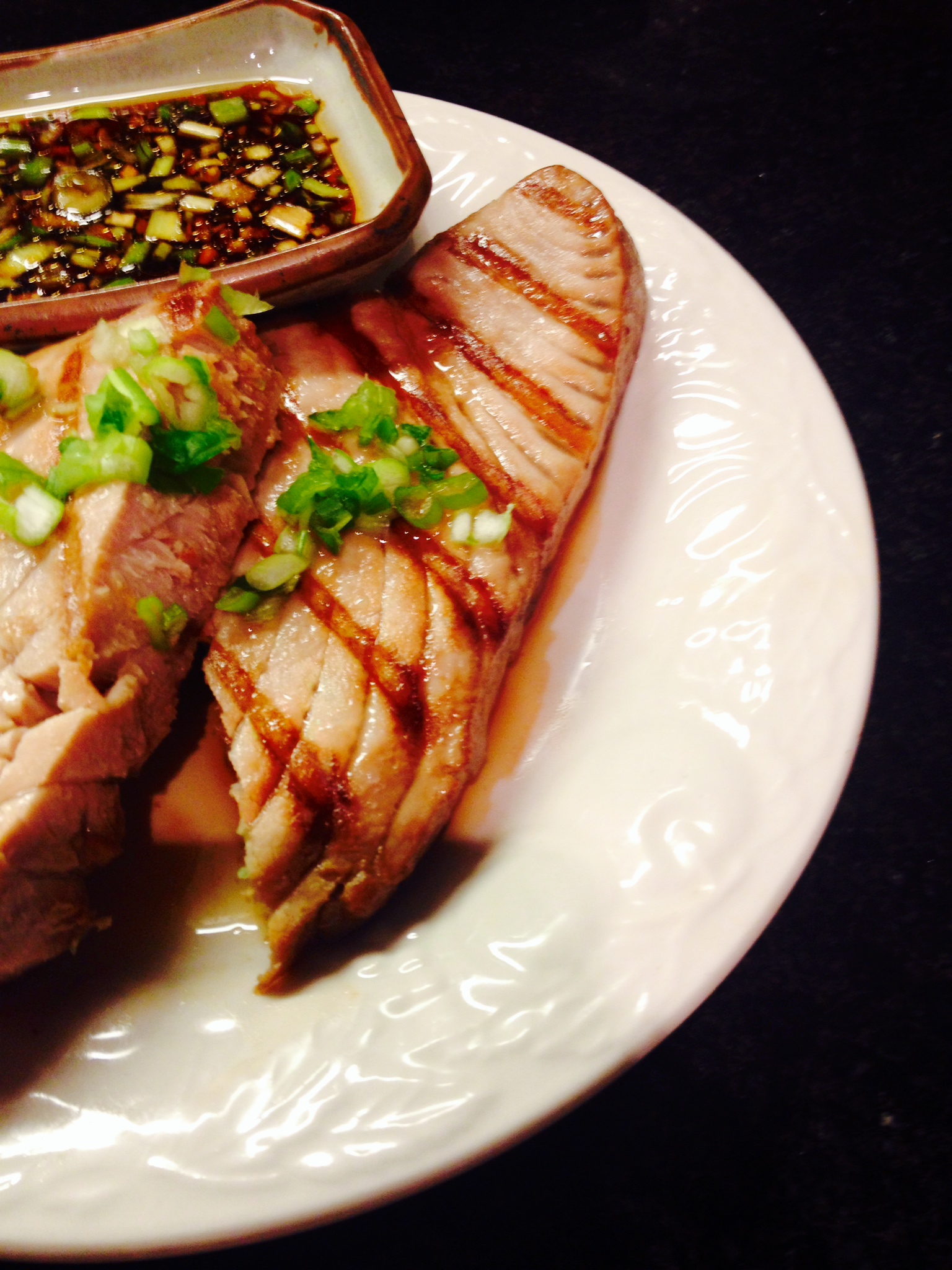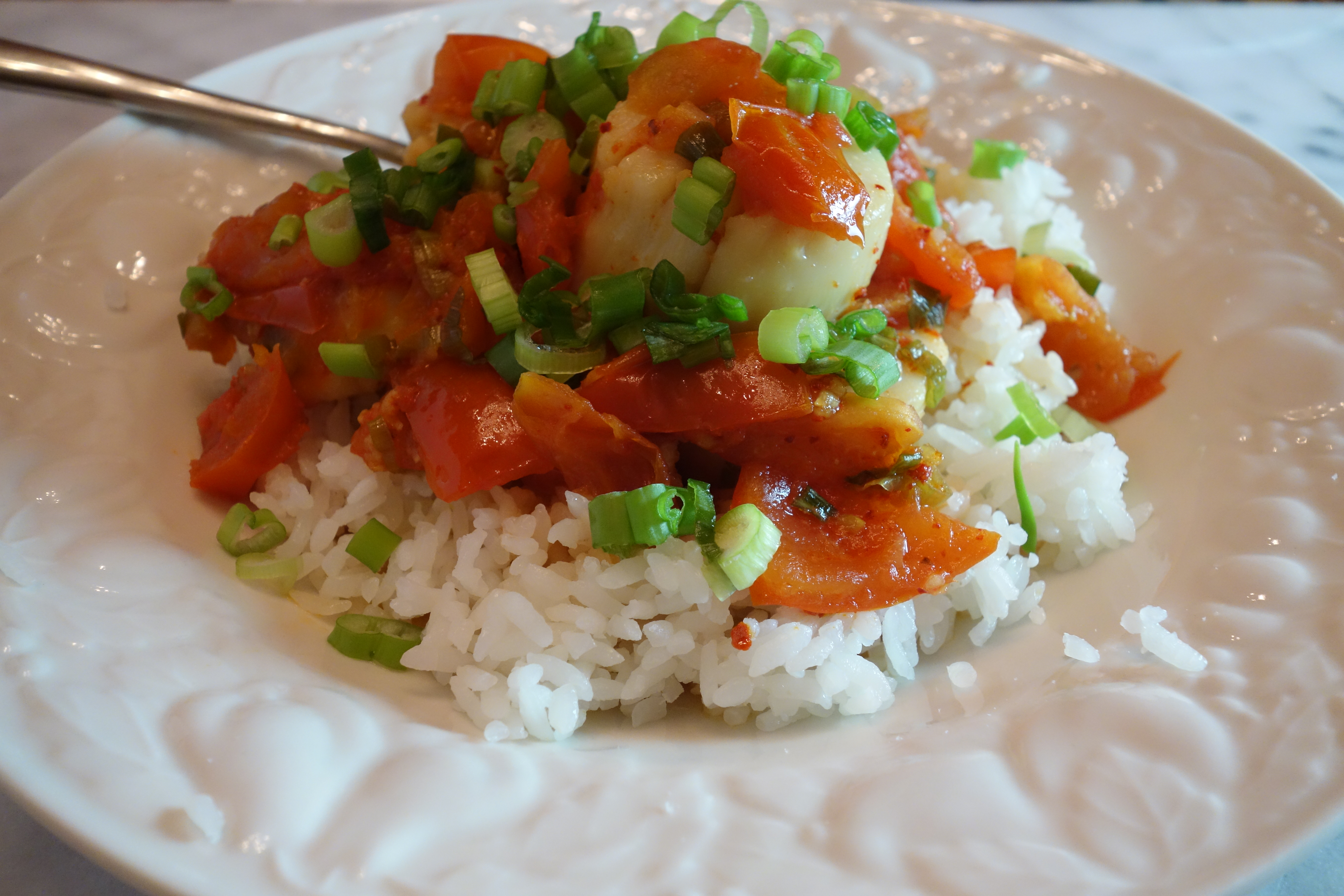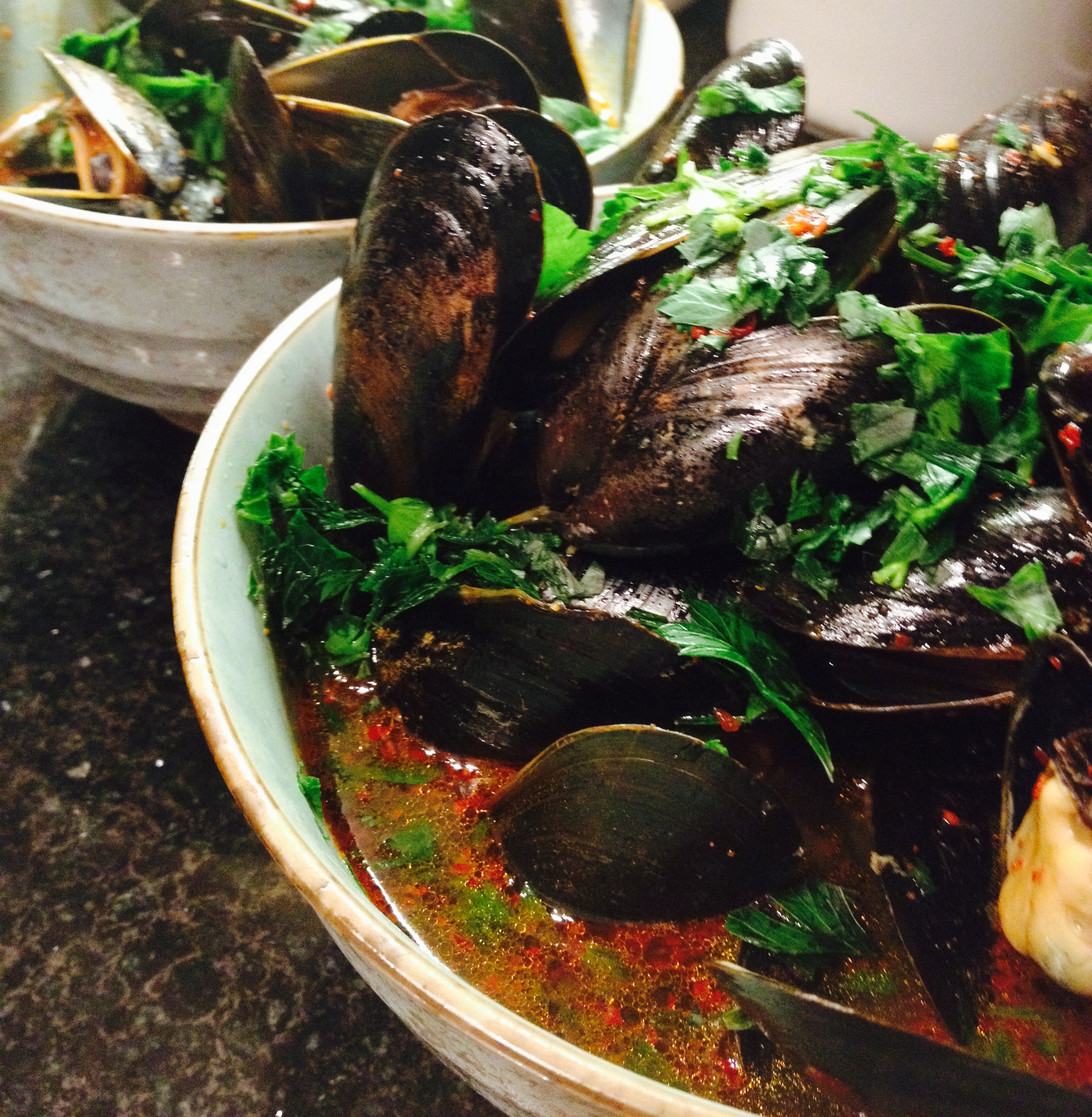Love Thai food? Me too! The combination of curry, coconut, and lime used in many Southeast Asian dishes is so addictive. Thanks to Thai curry paste, which is readily available (I got mine from Whole Foods), you can recreate the flavors at home without too much fuss. And one of the wonderful things about steaming mussels is that a delicious broth is created once the mussels open up and add their juices to the broth base. I like to serve this dish with jasmine rice because once you have finished the mussels, you can stir rice into the broth (which also has greens in it), and eat it like a soup. And you’ll want to. It’s so good! Continue reading
seafood
roasted lemon cod on crispy potato bed
Imagine a bed of thinly sliced potatoes roasted in olive oil and oregano until crispy and brown. Yum, right? Now imagine a flaky, lemony cod fillet on top. Extra yum! I also added some roasted grape tomatoes, but those are optional. It’s lovely just on its own. Continue reading
grilled tuna steaks with sesame ginger dipping sauce
Since we are urban apartment-dwellers, grilling = broiling for us. It’s like an upside down grill! Or at least ours is, because the heat source (flame) points down from the top of the oven – not everyone’s broiler is the same. Check yours out.
We made this on a cast-iron, enameled grill pan (like this) to get a nice sear and the grill marks on it (which serve a purpose – searing protein creates a Maillard reaction which intensifies umami, also known as savoriness). It helps a lot if you heat your grill pan up under the broiler, place your food on it (it will sizzle!) then put it back in the broiler. Nice! These tuna steaks are a hearty treat. We probably could have made them a little less well-done, which we will try next time. The dipping sauce is pretty intense, especially if you add wasabi – you gotta try it. Wasabi nose, whee!! (That feeling you get when the wasabi heat goes up in your nose! Ever notice how chile heat affects your mouth and lips but wasabi heat affects your nose? Know why? Me neither!) Continue reading
spicy saucy scallops with tomatoes and tamari, baked in a packet
Scallops are cute round delicious seafood. Need I say more? Well OK. Here is a scallop primer for total beginners (because I was one, too). There are lots of places giving detailed tips on purchasing scallops, so definitely Google it for more deets, but here are my quick tips.
Get DRY scallops. This means they are not soaked in brine or water, which is a cheapo way of keeping them preserved, AND increases their weight so you pay more for less. Disapprove.
There are SEA scallops and BAY scallops. Bay scallops are freshwater, sea scallops are seawater, so sea scallops are naturally saltier. Keep this in mind when seasoning your food.
Get the big ones (size of a poker chip or larger), not the tiny ones (size of a pencil eraser). They are different types, and my research said the tiny ones can be rubbery. It seems most recipes are for the big ones anyway.
Rinse them well. They can be gritty. And obviously like any seafood, make them right away once you buy them!
Got it? Let’s go! Continue reading
spicy tuna bites on cucumber rounds
Fast, easy, and healthy for a great quick appetizer or light lunch. If you are living la vida low-carb, this fits the bill. Continue reading
korean-style mussels in spicy broth
Mussels are one of the most sustainable seafoods and are very quick and easy to make with a little advance planning. The trick is cleaning them, but that has gotten much easier in recent years due to farming methods in which the mussels live in net bags instead of down in the sand, so they don’t get as sandy. And they are very fast to make because they just need a 5-minute steam to open them up. Here is a fun and spicy broth – be sure to have some bread or rice on hand to dip in after you’ve finished the mussels!
A word about the Korean condiments used here… you can buy them at Korean or Asian markets such as H-Mart. The red chile powder is called gochu galu and it does taste different from cayenne pepper in that it has more of a roasted red pepper flavor and you need to use more than you would cayenne. The hot pepper and bean paste is called sunchang gochujang and is Korean spicy miso. If you’re familiar with Japanese miso it is similar, but spicy. It adds a nice savory complexity to your dish. You can scale these ingredients up and down to your own taste – I use about half what it says in the original recipe because I’m a bit of a wimp with hot stuff. 🙂 Continue reading





